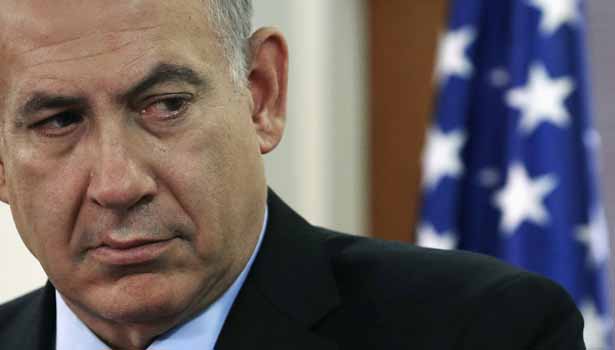-
[The reader may wish to peruse “Questioning Twenty Premises of an Official Publication of the Israel Ministry of Foreign Affairs” which appears at: /bin/content.cgi?ID=2139&q=1 ,and to compare it to this seminal piece – db]
Eight months after the withdrawal from Gaza, or what was referred to as a “unilateral disengagement,” things are not developing according to the early scenario marketed to the public.
Almost nothing has materialized in the way pullout supporters promised us would happen.
The Gaza Strip did not calm down and the Palestinian Authority did not take matters there into its own hands in order to establish the Middle Eastern Hong Kong. Gaza is a no-man’s land, the country of nobody. The Strip lacks a civilian regime, no currency, no enforcement of law and order, and most of the system tasked with providing the population with basic services is paralyzed, aside from the one run by the United Nations.
Armed gangs rule the narrow, derelict refugee camp streets. The only manufacturing activity is the industry of flying iron tubes that are launched to short distances. The point of launching them at Israel is unclear to anyone, including the launching cells themselves.
Yet when you have nothing to do and you’re young and filled with energy, and since your birth had only known poverty, occupation, and unemployment, you find an outlet in belonging to those ridiculous “Qassam cells.”
The handing over of the border crossing with Egypt to Palestinian control also failed to lead to the expected results. The border is rather porous, checks are inadequate, and smuggling is rampant. There too, the Palestinians failed to implement their sovereignty.
Egyptian Border Guard troops received one kind of order: Preventing at any price the turning of Gaza into part of Egypt. They’re carrying out this job, but nothing beyond.
The Palestinian Authority did not use the months between Israel’s withdrawal and the general elections in order to reinforce its hold among Gaza residents. It was busy with internal power struggles. The elections were decided in favor of Hamas.
Fatah’s armed spine was broken, some of the senior security officials left to the Gulf, and others quickly changed their political loyalty. For a while Gaza became Hamas land. Now, it’s not even that: In fact, even the official Hamas has given up in the face of Gaza’s collapse and left it to face its destiny.
And Israel, even though it removed its army and settlements, and even though it closed down the crossings to the movement of goods, is still stuck with Gaza as if it was a huge bone in its throat.
Rethinking convergence
We didn’t disengage: What is happening, and particularly what is not happening, in Gaza, continues to haunt us.
The responsibly over it, in the eyes of the world and in some ways in our own view, has not been lifted from Israel. This is complemented by the ongoing military activity against targets in the Strip, both in response to Qassam fire and in the form of targeted killings. In the eyes of Gaza residents, Israel continues to control the sea, air, and land. Only the settlers disappeared. This is good, but not enough.
Even the removal of the settlements is no longer perceived as such a huge victory by the Palestinian people. The thousands of good jobs at the settlements have disappeared, and instead unemployment and poverty grew.
The ruins of Israeli communities were not cleared, even though the Israeli government pledged (or rather, was forced to) pay for the clearing. It’s unclear who the guilty party is, the PA, or Egypt, or International groups.
Did Israel gain from the disengagement? Less than what its planners hoped. The United States didn’t grant us even one cent in economic aid, even though in various phases of preparation for the withdrawal and upon the pullout, much was said about a special USD 2 billion grant. As of today, there’s no grant.
For a short while, Israel enjoyed international sympathy, with the pullout perceived as the start of a large-scale unilateral withdrawal. Yet the sympathy is slowly evaporating, particularly following Ariel Sharon’s illness.
Ehud Olmert may discover that the attitude to a Sharon-made disengagement is very different than the world’s approach to an Olmert-made one. The first one fascinated the world because it appeared to be a personal sea change by a hawkish leader tired of war. The second one, Olmert’s pullout, would look like – and already looks like – as an act by a centrist politician whose party received about a quarter of the vote in the recent elections.
The Qassams, of course, do not constitute a danger to Israel, but they’re bothersome, annoying, and made the daily life of Gaza-area residents very difficult. And dangerous. Eventually, even if only due to the laws of probability, a rocket would land in a crowd concentration and lead to disaster.
The disengagement did not cause a rift within Israel society and didn’t lead to one kind of self-reflection or another. Eight months later, its memory is vague and its lessons unclear. We prefer not to talk about it and not to mention it.
Was there a disengagement? Was there a (Gaza settlement of) Netzarim? The fact that the post-disengagement reality does not resemble the earlier scenarios and predictions should make Ehud Olmert rethink his diplomatic plans.
Would Israel really be able to unilaterally set its border vis-à-vis the Palestinians, a border they or the world would not accept? Would Israel be able to “converge” into “settlement blocs” in the West Bank and annex them?
Who would finance such a move, which would cost tens of billions of shekels and not be perceived as a solution to anything? Who would prevent a tragic rift among the people? And what would be left behind in Palestine following a pretend-Israeli-withdrawal coupled with pretend-annexation?
Eight months after disengagement, the pregnancy only gave rise to question marks.







